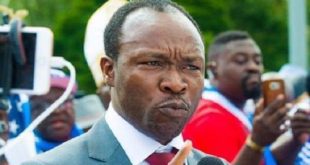Construction Review | An agreement was recently struck for the construction of the proposed Bini à Warak Hydroelectric Power Plant in Cameroon. The agreement was signed between Savannah Energy RCM and the government of Cameroon.
According to Savannah Energy PLC, the 75MW project will supply the northern part of Cameroon with clean and affordable power. It is expected to meet regional energy demand and facilitate a variety of energy-intensive industrial developments, primarily in the cement and metallurgy industries.
Furthermore, Bini à Warak Hydroelectric Power Plant in Cameroon will more than triple Northern Cameroon’s present on-grid electricity generation capacity. Upon completion of the World Bank-financed connectivity of the northern and southern electric networks, which the government currently plans for 2026, power may also be supplied to Cameroon’s southern electric grid.
Components of the proposed Bini à Warak Hydroelectric Power Plant in Cameroon
The Bini project involves constructing a dam on the Bini River and an 81km reservoir. As well as related tunnels, powerhouses, and substations. A 225kv transmission line connecting the Bini grid project to Cameroon’s northern electricity grid will also be developed.
According to Savannah Energy PLC, the project is intended to be developed on an independent power project basis. With project sanction anticipated in 2014 and the first power targeted in the 2027 to 2028 window.
According to the International Hydropower Association (IHA), Cameroon has the third-highest hydropower potential in Sub-Saharan Africa, behind the Democratic Republic of the Congo and Ethiopia. More than 60% of the nation’s installed electrical capacity comes from hydropower. Which continues to be the only renewable energy source on the grid. The remaining 40% comes from thermal sources.
Furthermore, Cameroon’s Minister of Water and Energy, Gaston Eloundou Essomba, the Bini project will address the existing electricity shortages brought on by the Ladgo Dam’s hydrological deficit. As well as lessen the area’s subsequent dependency on expensive thermally generated power.
 CameroonOnline.org Cameroon news, Actualité Camerounaise, live Web TV & Radio, World News and a lot more
CameroonOnline.org Cameroon news, Actualité Camerounaise, live Web TV & Radio, World News and a lot more





Hydro electricity production is first not stable because volume of water vary according to season. Even in a situation where water volume is artificially controlled using canals,It still can not produce steady energy capable of powering and industrial sector.there are only two sources of sure steady energy production and supply, fossil fuels and nuclear ?. energy.secondly it is not possible to produce energy for domestic use. What should be done is building industrial zones with fossil energy plants. Then power industry and use the remaining energy for domestic use. This helps bring down cost of domestic energy. Without industry to pay, no cheap energy for domestic use.